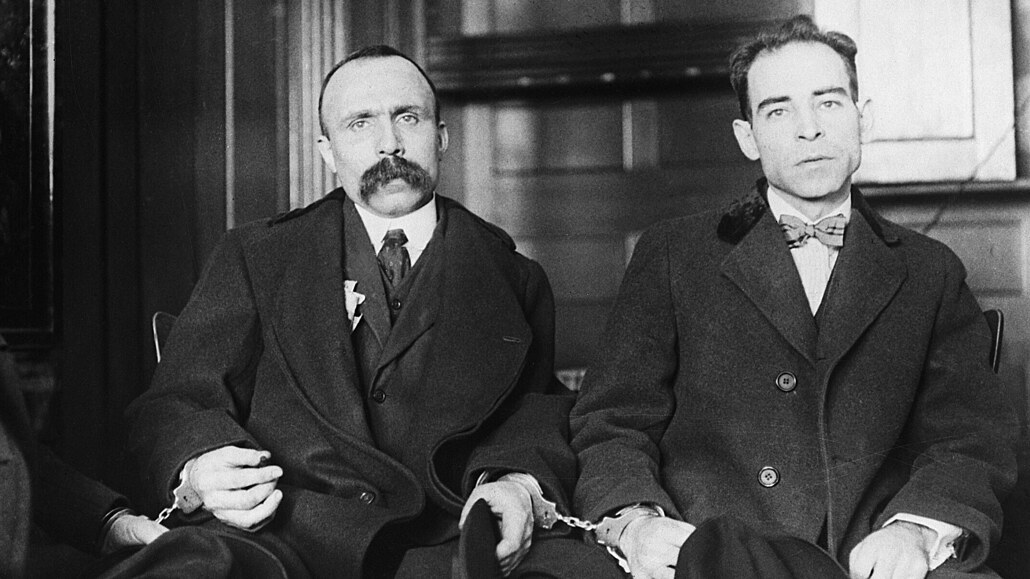From The Massachusetts Citizens Against The Death Penalty Website

Click below to link to the Massachusetts Citizens Against The Death Penalty website.
http://www.mcadp.org/
Markin comment:
I have been an opponent of the death penalty for as long as I have been a political person, a long time. While I do not generally agree with the thrust of the Massachusetts Citizens Against The Death Penalty Committee’s strategy for eliminating the death penalty nation-wide almost solely through legislative and judicial means (think about the 2011 Troy Davis case down in Georgia for a practical example of the limits of that strategy) I am always willing to work with them when specific situations come up. In any case they have a long pedigree extending, one way or the other, back to Sacco and Vanzetti and that is always important to remember whatever our political differences.Here is another way to deal with both the question of the death penalty and of political prisoners from an old time socialist perspective taken from a book review of James P. Cannon's Notebooks Of An Agitator:
I note here that among socialists, particularly the non-Stalinist socialists of those days, there was controversy on what to do and, more importantly, what forces socialists should support. If you want to find a more profound response initiated by revolutionary socialists to the social and labor problems of those days than is evident in today’s leftist responses to such issues Cannon’s writings here will assist you. I draw your attention to the early part of the book when Cannon led the Communist-initiated International Labor Defense (ILD), most famously around the fight to save the anarchists Sacco and Vanzetti here in Massachusetts. That campaign put the Communist Party on the map for many workers and others unfamiliar with the party’s work. For my perspective the early class-war prisoner defense work was exemplary.
The issue of class-war prisoners is one that is close to my heart. I support the work of the Partisan Defense Committee, Box 99 Canal Street Station, New York, N.Y 10013, an organization which traces its roots and policy to Cannon’s ILD. That policy is based on an old labor slogan- ‘An injury to one is an injury to all’ therefore I would like to write a few words here on Cannon’s conception of the nature of the work. As noted above, Cannon (along with Max Shachtman and Martin Abern and Cannon’s long time companion Rose Karsner who would later be expelled from American Communist Party for Trotskyism with him and who helped him form what would eventually become the Socialist Workers Party) was assigned by the party in 1925 to set up the American section of the International Red Aid known here as the International Labor Defense.
It is important to note here that Cannon’s selection as leader of the ILD was insisted on by the Industrial Workers of the World (IWW) because of his pre-war association with that organization and with the prodding of “Big Bill’ Haywood, the famous labor organizer exiled in Moscow. Since many of the militants still languishing in prison were anarchists or syndicalists the selection of Cannon was important. The ILD’s most famous early case was that of the heroic anarchist workers, Sacco and Vanzetti. The lessons learned in that campaign show the way forward in class-war prisoner defense.
I believe that it was Trotsky who noted that, except in the immediate pre-revolutionary and revolutionary periods, the tasks of militants revolve around the struggle to win democratic and other partial demands. The case of class-war legal defense falls in that category with the added impetus of getting the prisoners back into the class struggle as quickly as possible. The task then is to get them out of prison by mass action for their release. Without going into the details of the Sacco and Vanzetti case the two workers had been awaiting execution for a number of years and had been languishing in jail. As is the nature of death penalty cases various appeals on various grounds were tried and failed and they were then in imminent danger of execution.
Other forces outside the labor movement were also interested in the Sacco and Vanzetti case based on obtaining clemency, reduction of their sentences to life imprisonment or a new trial. The ILD’s position was to try to win their release by mass action- demonstrations, strikes and other forms of mass mobilization. This strategy obviously also included, in a subordinate position, any legal strategies that might be helpful to win their freedom. In this effort the stated goal of the organization was to organize non-sectarian class defense but also not to rely on the legal system alone portraying it as a simple miscarriage of justice. The organization publicized the case worldwide, held conferences, demonstrations and strikes on behalf of Sacco and Vanzetti. Although the campaign was not successful and the pair were executed in 1927 it stands as a model for class war prisoner defense. Needless to say, the names Sacco and Vanzetti continue to be honored to this day wherever militants fight against this system.
No comments:
Post a Comment